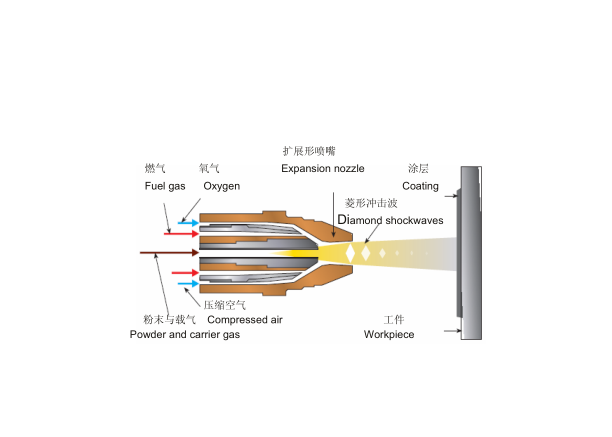

Compared with traditional atmospheric plasma spraying technology and vapor-phase physical deposition, low-pressure plasma spraying, as a thermal spraying technology, can produce purer, denser and higher bonding strength coatings. The principle, classification and characteristics of low pressure plasma spraying are mainly introduced, the generation and development of low pressure plasma spraying are reviewed, and compared with plasma spraying, ultra-low pressure plasma spraying and plasma spraying deposition, and its uniqueness in coatings is analyzed . Prepare for the edge. The research and application of low-pressure plasma spraying technology at home and abroad in thermal barrier coatings, fuel cells, solar energy, semiconductors and other fields are further introduced, and its development is expected. It is pointed out that the main development direction of low-pressure plasma spraying technology in the future lies in the in-depth study of plasma spraying flame flow and material matrix mechanism, as well as the combination with other cutting-edge technologies.

Low-pressure plasma spray technology was proposed by Steson and Hauk in the 1960s. In 1973, American EPI Company developed the first low-pressure plasma spraying equipment. In the 1980s, the company successfully developed plasma spraying technology, vacuum technology and automatic control technology. Low-pressure plasma spray technology is of modern significance, and its commercial production and sales are realized. There are solid-liquid two phases in the plasma flow, and the layered structure of the coating is obtained, as shown in Figure 2. Low pressure plasma spray particles are in a molten or semi-molten state, but using low pressure plasma spray (LPPS) can significantly prevent powder oxidation by controlling the deposition atmosphere to keep the velocity of the sprayed particles at a high level, making LPPS coatings and High bond strength between substrates, resulting in improved coating performance.
Ultra-low pressure plasma spraying is a new spraying technology developed on the basis of low-pressure plasma spraying. Ultra-low pressure plasma spraying (VLPPS) is operated under the protection of an inert atmosphere at an abnormally low pressure of 100-1000 Pa, and can be used to manufacture ceramic and metal coatings. Compared with atmospheric pressure plasma spray (APS) or even low pressure plasma spray (LPPS), the structure and deposition mechanism of the plasma stream are different, and the ultra-low pressure plasma spray coating is formed by vapor condensation, not by the impacted Flat particle accumulation, diffusion and solidification of molten particles. Compared with low-pressure plasma spraying, this technology has a wide adjustment range of process parameters, and can realize solid phase, liquid phase, and vapor phase deposition. shown in Figure 3.
Plasma spray deposition is a new type of plasma spraying technology proposed by M. Gorski in 1996, which combines the advantages of atmospheric plasma spraying (APS) and electron beam physical vapor deposition (EB-PVD), and can be used in semi-molten, molten state. It is deposited in a mixed state with the gas phase. When vapor deposition is used, sprayed thermal barrier coatings with columnar structures of high porosity and low thermal conductivity can be obtained. Compared with the ultra-low pressure plasma spraying technology that uses a high-power spray gun to realize the vaporization of the sprayed material, the power of the plasma spray deposition spray gun is less than 5 kW, the arc current is low pressure 100 A, and the dynamic working pressure is low pressure 1000 Pa. The protective gas pressure difference in the vacuum chamber realizes supersonic jet deposition; the deposition rate is much higher than that of traditional PVD and CVD deposition, and the cooling rate is fast, and it is easy to obtain a columnar coating with good nanostructure
Hot information

